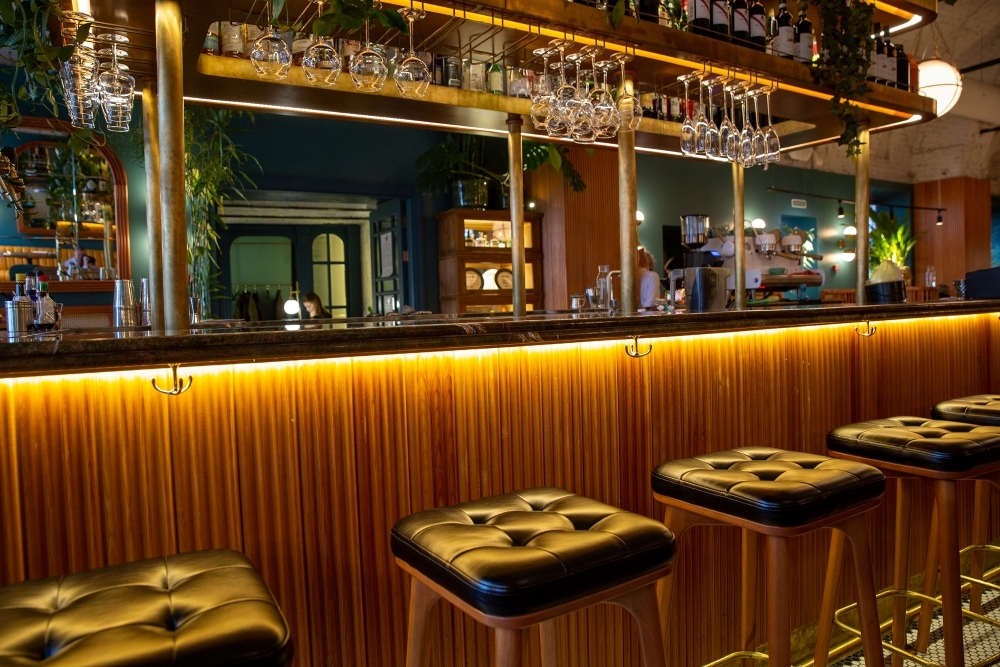Best Places to Live in Italy
With its breathtaking landscapes, celebrated gastronomy, rich cultural heritage, and la dolce vita lifestyle, Italy is one of the most sought-after postcodes in the world. The 3,000-year-old region encompasses azure coastlines, soaring mountain ranges, and rolling vineyards, in addition to glamorous fashion districts and quaint towns.
As of 2020, immigrants and expats made up 10% of Italy's population. Net migration numbers are on a steady rise, which can be attributed to the country’s thriving economy and overall standard of living. It is the third-largest national economy in the EU, driven by flourishing industries such as automotive manufacturing and luxury goods exports. Italy also boasts a high quality of life as per the OECD index, ranking above average in the categories of health and civic engagement.
Read on to discover the best places to live in Italy.

Milan
A global fashion capital, Milan is synonymous with luxury, sophistication, and refinement. It is also a major financial district in the country, home to the Italian stock exchange.
Dating to the 5th century, Milan is an impressive repository of European history, brimming with lore from the Celtic age to the Roman times and early modern colonialism. Today, it is one of Italy’s most affluent economies, with a GDP per capita of €49,500. It is an international leader in several sectors, including media, tourism, design, art, chemicals, and commerce.
With its immense wealth and urban development, Milan is one of Europe’s four economic motors and a major city in the Blue Banana Corridor (a discontinuous, “banana-shaped” stretch of highly developed and urbanised regions, stretching from the UK to northern Italy). A significant commercial centre, the city is home to over 277,000 international residents, which form 20% of the total population.
According to the Global Power City Index, Milan has been recognised as the fifth most livable city in the world. The cost of living is steep, with house prices in Milan averaging at €5,440 per square metre.
Also Read: Best Places to Live In Portugal for Expats
Rome
Rome is the capital city of Italy and the third-most populous metropolis in the EU. With a history spanning over 28 centuries, it is one of Europe’s oldest cities in continuous occupation.
Throughout history, Rome has significantly influenced the workings of the Western world in the spheres of politics, art, and religion. The Roman Empire, which lasted from 625 BC to AD 476, occupied over 4.4 million square kilometres at its peak. It was also one of the first Renaissance centres. As such, it is rightly known as “Capital Mundi” (capital of the world).
Today, Rome is defined by its splendid historical landmarks such as the Colosseum, the Roman Forum, and the Spanish Steps. The city is home to 280 fountains and over 900 churches. It is also the mainstay for technology, tourism, banking, telecommunications, and pharmaceutical sectors.
A bustling capital, Rome offers a blend of history, tradition, and modernity. Over 300,000 expats live here. The median price of a residential property in Rome is €3,392 per square metre.
Also Read: Best Places to Live In France
Florence
Florence, the capital of Italy’s Tuscany region, is considered the birthplace of the Renaissance, a vital cultural, artistic, political, and economic centre.
Florence was founded as a Roman city and evolved swiftly into a leading trading district. By the Middle Ages, it was a wealthy commune because of its strategic location by the Arno River. Banks in Florence were financing businesses around the continent as well as English Kings during wars.
Florence created a seismic shift in the realm of art by developing the famous Florentine style, inspired by Realism in the arts. The region's poignant artistic revolution, coupled with movements led by political thinkers like Lorenzo de'Medici, led to the Renaissance.
Today, Florence is known for its resplendent historic landmarks such as the Duomo Cathedral, Michelangelo's David, and the Basilica of Santa Maria Novella. It is also one of the top 15 fashion capitals in the world, besides paving the way in the pharmaceuticals, ceramics, glass, and handicrafts industries.
About 14% of its population comprises expats and immigrants. The average asking price for properties in Florence is €4,283 per square metre.
Also Read: Best Places in Cotswolds
Turin
Turin is a vast metropolis in northern Italy. It is situated by the Po River, enveloped by the western Alpine arch and the Superga hill.
Turin’s historical significance dates to the Middle Ages. It became the capital of the duchy of Savoy in the 16th century, the capital of Sardinia in the 18th century, and was the chief centre of the Risorgimento (a political movement leading to the unification of Italy in the 19th century). As such, Turin is known as the birthplace of Italian liberty and has remained a dominant political centre in the country.
Besides its baroque architecture and rich mountainous landscape, Turin is known for its delectable chocolates, promising automotive industry, and inventive aerospace ventures. Headquartering Fiat and Maserati, it is one of Italy’s automobile capitals.
The city is home to over 850,000 residents (two million if the greater Turin urban area is considered). About 14% of the populace comprises foreign inhabitants. The average house price in Turin is €2,059 per square metre.
Also Read: Best Place to Live In Spain Near Beach
Naples
Located on the Gulf of Naples, Naples is one of the oldest inhabited regions in the world. It is currently the third-most populated city in Italy.
Naples was founded in 600 BC as a Greek settlement and blossomed into a centre of Greek culture and philosophy. In the later centuries, the city was adorned with lavish villas, baths, and temples, having become a holiday town for wealthy Romans. During the Middle Ages, it was a crucial political centre, as the capital of the Kingdom of Two Sicilies. Eventually, the city became a pioneering artistic haunt by founding the Baroque artistic style and redefining the standards for opera.
Today, Naples is known for its distinctive gastronomy, illustrious artwork, and notable historic sites like the Teatro di San Carlo, Castel dell'Ovo, and the Sansevero Chapel Museum. Shipbuilding, electronics, and aircraft sectors drive Naples’ economy. The city also hosts NATO's Allied Joint Force Command Naples and the Parliamentary Assembly of the Mediterranean, underscoring its political and diplomatic importance.
Foreign residents make up about 4.1% of the city’s population. The average property price in Naples is €2,874 per square metre.
Also Read: Best German City to Live In
Bologna
Located at the foot of the Apennines, Bologna is known for being the “European capital of culture,” a UNESCO "City of Music," and a World Heritage Site.
Bologna has seen human activity since the third millennium B.C. and was a major town under the Gallic Boii tribe and the Romans. The city has faced incessant turmoil, with rioting, plagues, and heightened political instability. Notwithstanding the unrest, Bologna has contributed immensely to Italy's culture. The University of Bologna, established in 1088 AD, is the world’s oldest university in continuous operation. Throughout its life, the city has been adorned with countless churches, towers, and intricate porticos.
Today, Bologna is renowned for its exceptional literary merit, elaborate architecture, impressive cityscape, and novel gastronomy. Education, motorworks, transport, and agriculture form the backbone of the city’s economy.
In 2022, Italian finance publication Il Sole 24 Ore called Bologna the best city in Italy for overall quality of life. The European Regional Economic Growth Index ranked Bologna highly for its economic growth rate in 2009.
About 11.9% of the city’s population comprises foreign residents. The average house price in Bologna is €3,519 per square metre.
Also Read: Best Towns in Oxfordshire
Venice
Floating on the shallow Venetian Lagoon, Venice is a magnificent city in northeastern Italy. It is known by many names, such as “The Floating City,” “The City of Masks,” and the “City of Canals.” The New York Times aptly described it as “the most beautiful city built by man."
The city began as a haven for refugees during the ancient period. It was consolidated and developed around the 9th to 12th centuries AD. Located by the Adriatic Sea, Venice evolved into a promising trading centre and ultimately became one of the richest cities in Europe. At its peak, Venice was the commercial premier in the Mediterranean Sea, controlling over 3,300 ships.
Today, Venice is known for its grand architecture and quaint beauty, with exquisite palaces, beautiful bridges, and graceful gondolas to boot. It has long been a fixture in romantic plays, novels, and music.
Textiles, furniture, glassmaking, and bespoke handicrafts are the main industries driving Venice’s economy besides tourism. As of 2023, there has been a spike in the number of foreign residents, with about 40,770 immigrants inhabiting the country.
The average house price in Venice is €3,242 per square metre.
Also Read: Best Cities to Live In UK for Young Adults
In Italy, residents can marvel at the mighty mountains, revel in the coastal serenity, and also enjoy the glamour of upscale cities. The country offers an utterly unique cultural experience and an elevated lifestyle, making it a nonpareil homestead. From the high life in Milan to the quaint beauty of Venice, these are the best places to live in Italy.



